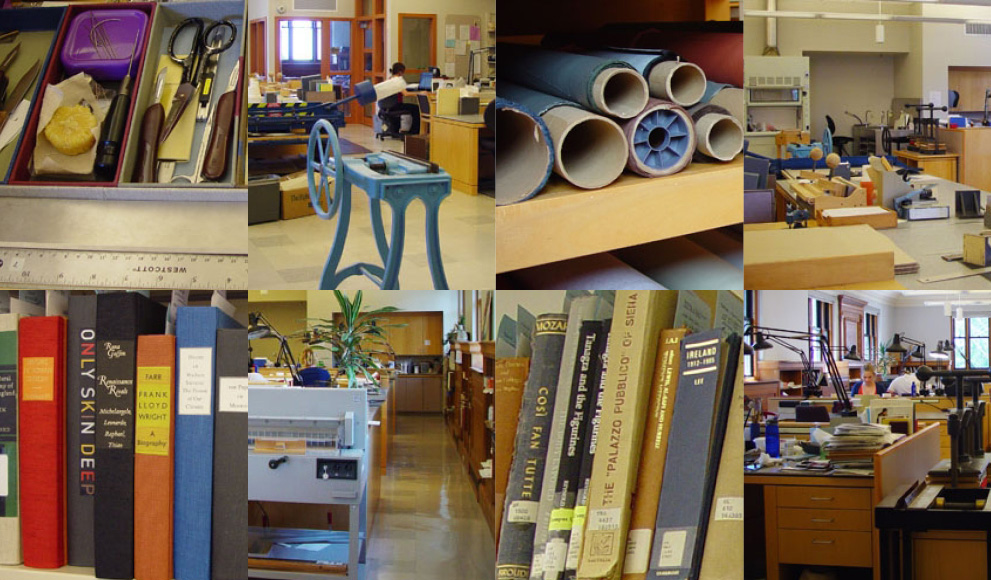Students Play An Important Role At Wellesley’s Conservation Facility

The Conservation Facility, located on the fourth floor of Wellesley’s Clapp Library, is responsible for repairing and restoring the library’s circulating and reference collections. Although much of the Conservation Facility’s work is behind the scenes, their continued efforts are essential to the future of Wellesley’s research materials and valuable collections.
Repairs and treatments range in complexity. Conservation Facility staff members are on constant alert for minor damage and wear and tear in Wellesley’s collections to prevent more extensive future damage. When damaged volumes are discovered, those that have been requested by patrons have the highest priority, as do all circulating materials. All repairs are completed using the most up to date methods and practices, as outlined by the American Institute of Conservators (AIC).
Student assistants perform the majority of the repairs to circulating collections, including minor repairs such as page mending, and preventative work such as binding pamphlets into binders (look at the scores in the Music library for many examples of these). Students also assist with more involved efforts such as spine repairs and rebinding (creating a new cover for a book), and creating enclosures of different kinds, from shrink-wrapping to phase boxes (the blue-grey boxes with button and string ties) to fabric-covered clamshell boxes used in the Special Collections and Archives.
"Working in [the Conservation Facility] is often the first time students have been exposed to any of this kind of hands-on work," said Emily Bell, Wellesley’s collections conservator. "Many of them are inspired by their experience here to continue to study conservation and to go on to careers either in conservation or in other areas of libraries."
The current Conservation Facility opened in September of 1999, funded by the Friends of the Library Steering Committee. The effort to establish the facility was led by Eleanor Gustafson, College Librarian Emerita, in the 1980s. Micheline Jedrey and June Milton Stobaugh '66 were also instrumental to the facility’s founding.
Barbara Lubin Goldsmith '53, a Life Member of the Friends of the Library, established a fund in the early 1990s designated for the preservation of Wellesley’s collections. She was also instrumental in abolishing the use of acidic paper in the United States in favor of an alkaline version, which is more durable and more environmentally friendly. She was honored for her work by the Publishers Literary Award and the National Archives Award.
"Learning about the structures of books and how they can deteriorate over time is not something students are likely to learn in other ways, unless they are fortunate enough to take a course that focuses on book history or are involved in a class that works with Katherine Ruffin, the Book Arts Program Director, for a special session on bookbinding," Bell said. "Knowing about the transmission of knowledge over the centuries can be an eye-opening experience, and often makes the students see things in a different light."
-Jennifer Lyon-Mackie '18 contributed to this story.
